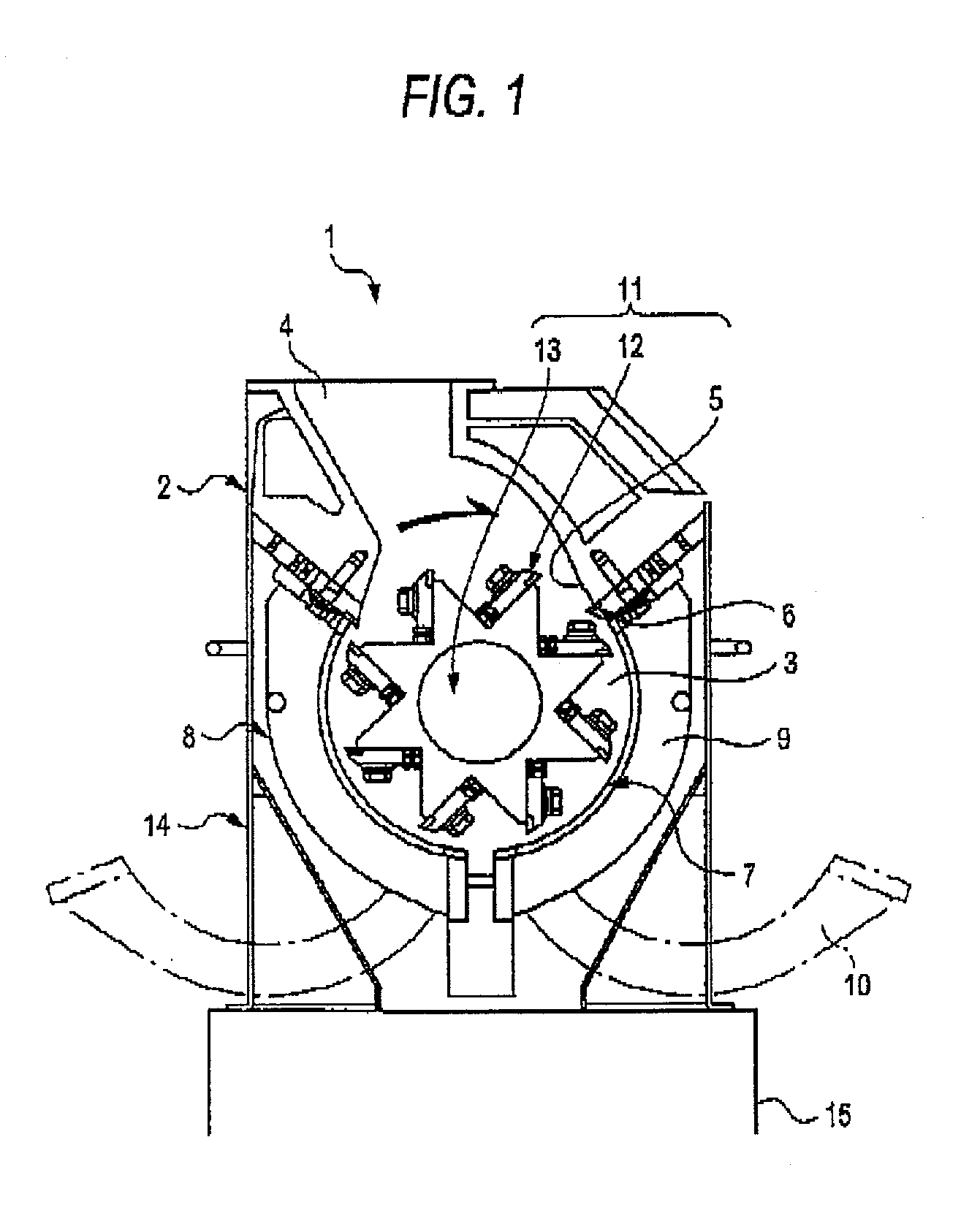Friction material and method of mix-fibrillating fibers
- Summary
- Abstract
- Description
- Claims
- Application Information
AI Technical Summary
Benefits of technology
Problems solved by technology
Method used
Image
Examples
example 1
Wet Fibrillation
[0077] As a fibrillation apparatus, use was made of a Super Masscolloider MKZA10-15manufactured by Masuko Sangyo. An aramid fiber and an acrylic fiber cut into about 13 mm in length were put into water at a weight ratio of 1:1 and nixed well. Then the mixture was supplied into the apparatus together with water to give a pulp. The obtained pulp was dehydrated and dried. When the pulp was observed under a fluorescent microscope, it was found out that the aramid fiber was uniformly distributed.
example 3
Dry Fibrillation
[0078] As a fibrillation apparatus, use was made of a Mesh Mill HA8-2542-25 manufactured by Horai. An aramid fiber and an acrylic fiber cut into about 13 mm in length were supplied via the raw material supply port at a weight ratio of 1:1 and mixed- well. When the obtained pulp was observed under a fluorescent microscopes it was found out that the aramid fiber was uniformly distributed.
[0079] According to the present invention, it becomes possible to use a dry aramid pulp, which can be produced at a low cost without worsening the material retention properties and preforming properties and yet maintaining the merit of low production cost, by mixing a dry aramid pulp (i.e., an aeramid pulp produced by the dry method) with a wet aramid pulp (i.e., an aramid pulp produced by the conventional wet method) or pulps made from other materials (woodpulp, acrylic pulp, etc.) Furthermore, the aramid pulp produced by the dry method suffers from no branching in the fiber stem and ...
PUM
 Login to View More
Login to View More Abstract
Description
Claims
Application Information
 Login to View More
Login to View More - R&D
- Intellectual Property
- Life Sciences
- Materials
- Tech Scout
- Unparalleled Data Quality
- Higher Quality Content
- 60% Fewer Hallucinations
Browse by: Latest US Patents, China's latest patents, Technical Efficacy Thesaurus, Application Domain, Technology Topic, Popular Technical Reports.
© 2025 PatSnap. All rights reserved.Legal|Privacy policy|Modern Slavery Act Transparency Statement|Sitemap|About US| Contact US: help@patsnap.com

